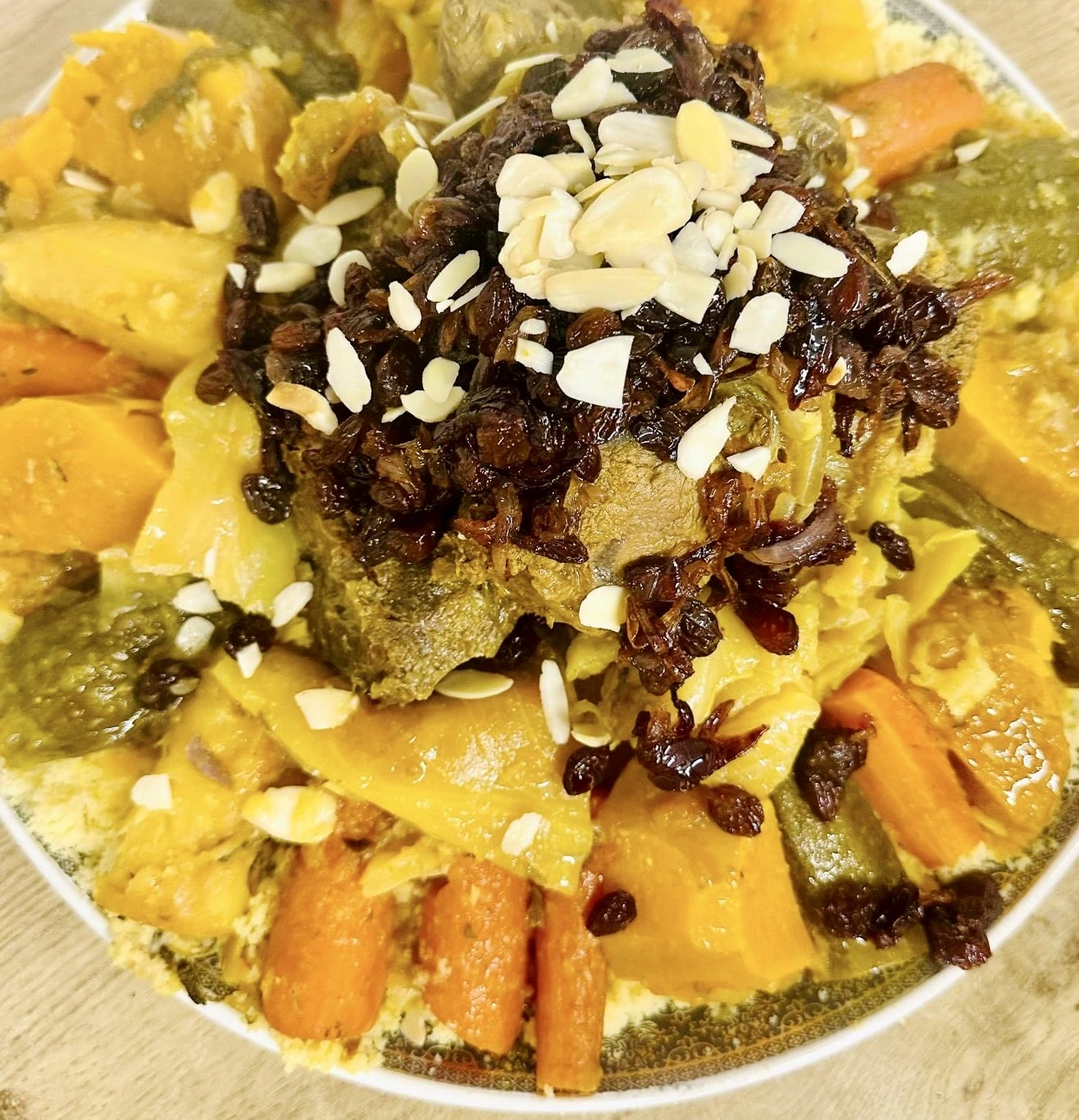When you think of Moroccan cuisine, one dish often stands out—couscous. Its fluffy texture, rich spices, and versatility make it a global favorite. But what if you’re gluten-intolerant or following a gluten-free lifestyle? Traditional couscous, made from wheat, is off-limits. The good news? You can still enjoy the flavours of Morocco with a gluten-free twist on this beloved dish. Let’s dive into how you can create an authentic gluten-free Moroccan couscous recipe that doesn’t compromise on taste or tradition.
Why a Couscous Gluten Free Recipe Matters
Imagine being at a dinner party where aromatic Moroccan spices waft through the air, but you can’t indulge because the dish contains gluten. It’s a scenario many gluten-sensitive individuals face. This recipe is your gateway to reclaiming those moments. With the right ingredients and techniques, you can recreate the magic of couscous while keeping it safe for your dietary needs. Whether you’re gluten-intolerant, have celiac disease, or simply prefer gluten-free meals, this recipe promises to deliver on flavour and authenticity.
Understanding Gluten-Free Couscous
What Makes Regular Couscous Not Gluten-Free?
Couscous might look like rice or quinoa, but don’t be fooled—it’s made from semolina, a type of wheat. This means traditional couscous contains gluten, a protein that can trigger adverse reactions in individuals with gluten sensitivity or celiac disease.
The Best Gluten-Free Alternatives for Couscous
Fortunately, there are plenty of substitutes that mimic the texture and versatility of couscous. Here are some of the top options:
- Quinoa: A nutrient-rich seed with a slightly nutty flavor.
- Millet: A grain with a mild taste, perfect for absorbing spices.
- Rice Couscous: Made from rice flour, it closely resembles the original.
- Cauliflower Couscous: A low-carb, gluten-free option made from finely grated cauliflower.
Each substitute brings its own unique texture and flavour, so feel free to experiment and find your favourite.
Ingredients for the Ideal Moroccan Gluten-Free Recipe
Creating the perfect Moroccan couscous dish starts with selecting high-quality ingredients. Here’s what you’ll need:
| Ingredient | Quantity | Notes |
|---|---|---|
| Chicken, lamb, or beef | 1 lb (450g) | Cut into chunks |
| Onions | 2 medium | Chopped |
| Parsnip | 1 large | Peeled and chopped |
| Pumpkin | 1 cup | Peeled and chopped |
| Courgettes (Zucchini) | 2 medium | Chopped |
| Carrots | 2 medium | Peeled and chopped |
| Potato | 1 large | Peeled and chopped |
| Cabbage | 1/4 head | Chopped |
| Chickpeas | 1 cup (cooked) | Or use canned, drained and rinsed |
| Fresh Parsley | 1/4 cup | Chopped for garnish |
| Fresh Coriander | 1/4 cup | Chopped for garnish |
| Ground Pepper | 1 tsp | |
| Ground Turmeric | 1 tsp | |
| Ground Ginger | 1/2 tsp | |
| Preserved Butter (Smen) | 2 tbsp | |
| Salt | To taste | |
| Paprika | 1 tsp | |
| Olive Oil | 2 tbsp | Use extra virgin for best flavour |
Step-by-Step Guide to Making Moroccan Gluten-Free Couscous
Preparation
1. Cook the Protein
- In a large pot, heat the preserved butter (Smen) over medium heat.
- Add the chicken, lamb, or beef chunks and sear on all sides until browned.
- Remove the meat and set it aside.
2. Sauté the Vegetables
- In the same pot, add the chopped onions and sauté until soft and translucent.
- Add the parsnip, pumpkin, courgettes, carrots, and potatoes. Stir well to combine.
- Season with salt, ground pepper, turmeric, and ground ginger. Cook for about 5-7 minutes.
3. Simmer the Stew
- Return the seared meat to the pot, along with the cabbage and chickpeas.
- Add enough water or vegetable broth to cover the ingredients.
- Bring the mixture to a boil, then reduce the heat and let it simmer for 45-60 minutes, until the meat is tender and the vegetables are cooked through.
4. Prepare the Gluten-Free Couscous Substitute (Quinoa or Millet)
- While the stew is simmering, prepare your gluten-free couscous substitute, such as quinoa or millet.
- Rinse the quinoa or millet thoroughly. Cook it in a pot with vegetable broth for added flavor, following the package instructions.
- Once cooked, fluff it with a fork to separate the grains.
5. Assemble the Dish
- Serve the cooked quinoa or millet on a large platter.
- Spoon the hearty stew, including the meat, vegetables, and broth, over the couscous substitute.
- Garnish with freshly chopped parsley and coriander, and a sprinkle of paprika for color and flavour.
Health Benefits of Moroccan Couscous Gluten Free
Nutritional Breakdown
Switching to gluten-free alternatives can offer additional nutritional benefits. Here’s a breakdown comparing traditional couscous to quinoa, often used as a gluten-free substitute:
| Nutrient | Traditional Couscous | Gluten-Free Quinoa |
|---|---|---|
| Calories (per cup) | 175 | 120 |
| Protein (g) | 6 | 8 |
| Fiber (g) | 2 | 5 |
Benefits for Gluten-Sensitive Individuals
- Better Digestion: Since gluten can be hard on the digestive system for some people, using a gluten-free substitute like quinoa or millet offers a more easily digestible option.
- Nutrient-Dense: Quinoa is a complete protein, meaning it contains all nine essential amino acids, which is a great benefit for those on gluten-free diets.
- Rich in Fiber: Quinoa and millet are excellent sources of fiber, promoting better digestion and a healthy gut.
Pro Tips for Authentic Flavour
- Use Preserved Butter (Smen): Smen is a key ingredient in Moroccan cooking, lending a distinct richness to the dish. Be sure to use it for that authentic flavor.
- Season Well: Don’t shy away from generous amounts of ground turmeric, ginger, and paprika. These spices not only add depth to the stew but also contribute to the dish’s vibrant colors and aromatic appeal.
- Serve with Fresh Herbs: Garnish with freshly chopped parsley and coriander to brighten up the dish and add a burst of freshness. If you enjoy a bit of heat, you can also serve it with harissa
- sauce on the side.
Conclusion
This Moroccan gluten-free couscous recipe allows you to savor the comforting, aromatic flavors of Morocco without compromising on your dietary needs. The rich, savory stew, filled with tender meat, hearty vegetables, and a generous mix of spices, will transport your taste buds straight to the heart of Morocco. The quinoa or millet substitute ensures that those avoiding gluten can still enjoy this traditional dish.
Whether you’re cooking for a family gathering or simply craving something flavorful and satisfying, this recipe is perfect for any occasion. Try it today and experience the rich culinary traditions of Morocco, all while keeping your meal gluten-free!
Craving for more https://www.auntyrecipes.com/trending/

